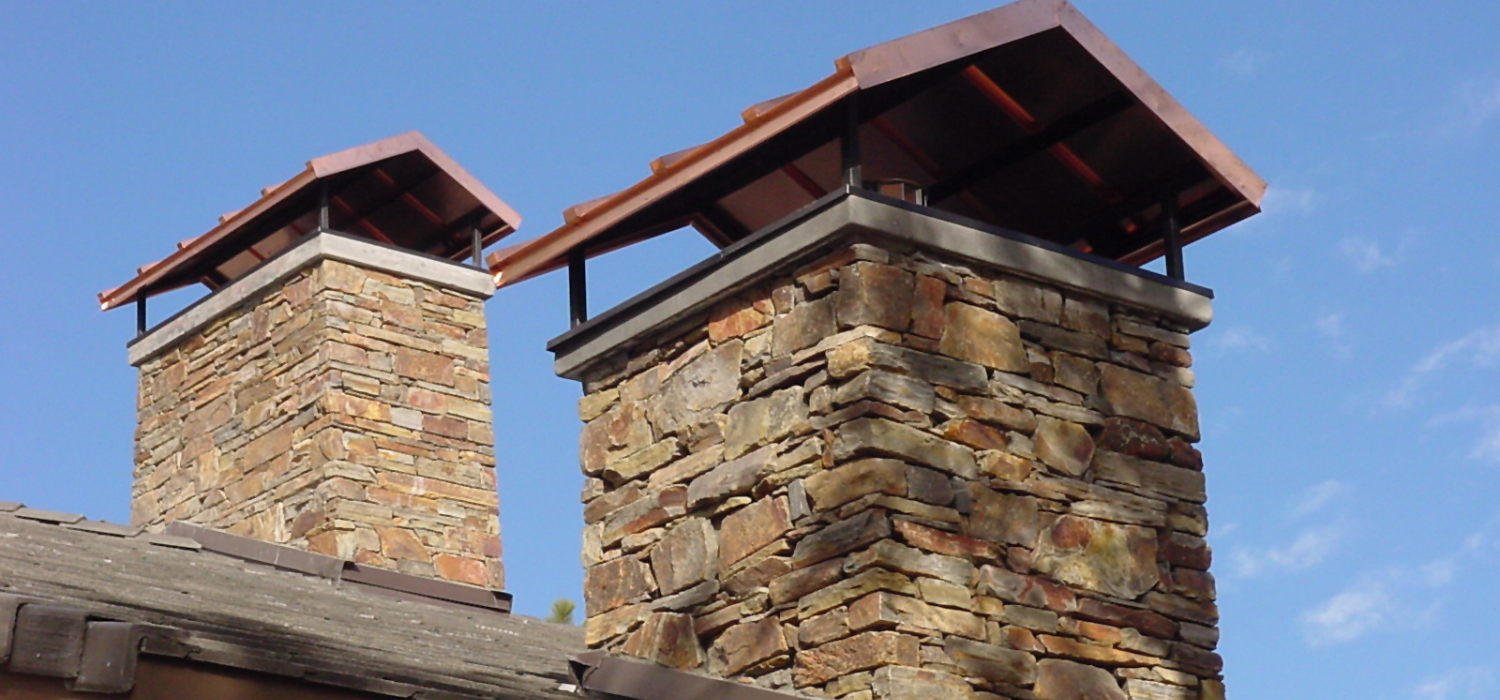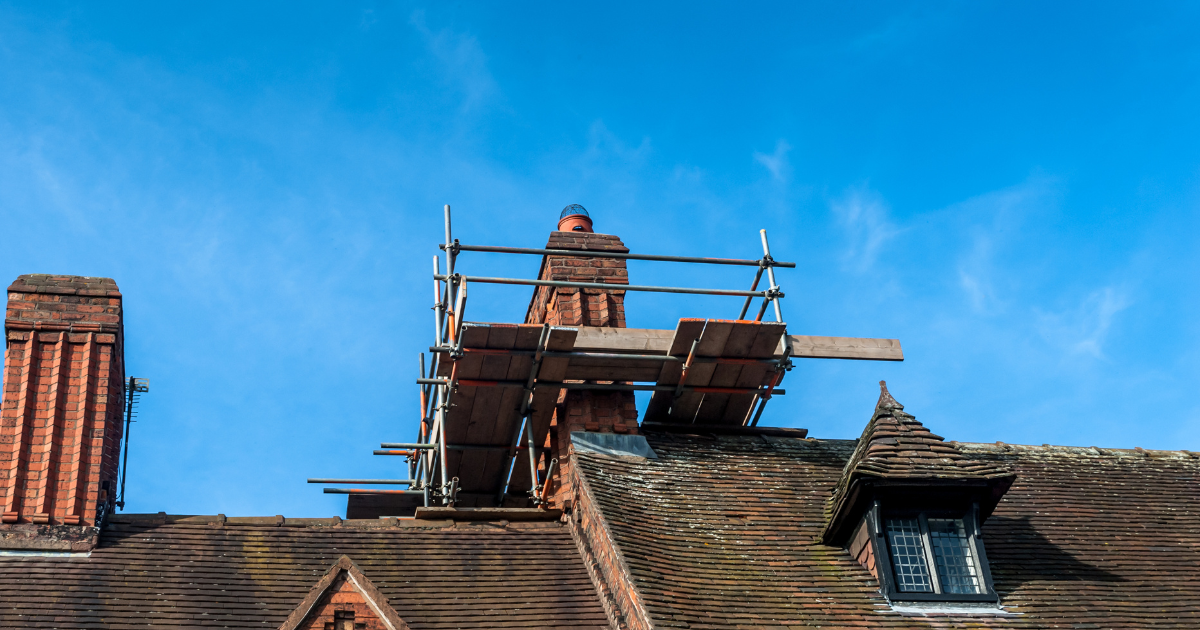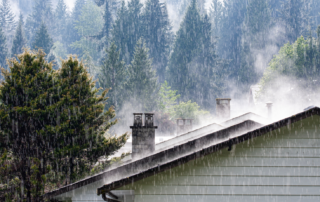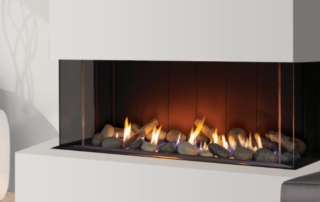SERVICES
Chimney Inspections

Level 1 Inspection
If you’re planning to use your appliance and venting system the same way you always have, a Level 1 Inspection is all you need. It’s great for when your chimney is still in good shape and you’re not making any changes.
During a Level 1 Inspection, our technician will take a look at the parts of your chimney they can easily reach and see, both inside and out. They’ll check to make sure the chimney is structurally sound, the flue is in good shape, and the appliance is installed and connected properly. They’ll also make sure there are no blockages or combustible deposits that could cause problems. A Level 1 Inspection is done during every chimney sweep.
Level 2 Inspection
If you do anything to your fireplace or chimney system, you’ll need a Level 2 Inspection. This includes changes to the fuel type, shape, or material of the flue. Replacing or adding an appliance of a different type, input rating, or efficiency is also cause for a Level 2 Inspection. For instance, if you want to switch from a wood-burning fireplace to gas logs, you’ll need a Level 2 Inspection.
You’ll also need a Level 2 Inspection when you sell or transfer your property or after a problem or event that might have damaged the chimney. Examples include, but aren’t limited to, things like a structure or chimney fire, an earthquake, or bad weather such as a lightning strike. A Level 2 Inspection is more detailed and in-depth than a Level 1 Inspection.
A Level 2 Inspection is like a Level 1 Inspection, but it also takes a closer look at the chimney. It checks the outside and inside of the chimney, including the attic, crawl spaces, and basement. It also makes sure that the chimney is the right distance away from anything that could catch on fire.
Level 2 Inspections do not require any special tools to open doors, panels, or coverings. The inspection will include a video scan to check the inside of the chimney and make sure everything looks okay. The inspection won’t damage or take apart any permanent parts of the chimney, the building, or the finish.

Level 3 Inspection
If our initial inspections hint at a hidden hazard, we’d recommend a Level 3 Inspection. This deep dive gets into the nitty-gritty of your chimney and flue, checking their construction and condition in the hidden bits. Be prepared, though –we might need to remove or even destroy some permanent parts of your chimney or building to get the full picture.
Of the three levels, Level 3 is the big daddy. It’s got everything from Level 1 and 2, plus some extra bells and whistles. That includes taking apart bits of your building or chimney if we need a closer look. But don’t worry, we’ll only do that if we think there’s something serious that needs checking out.
SERVICES
Chimney Inspections

Level 1 Inspection
If you’re planning to use your appliance and venting system the same way you always have, a Level 1 Inspection is all you need. It’s great for when your chimney is still in good shape and you’re not making any changes.
During a Level 1 Inspection, our technician will take a look at the parts of your chimney they can easily reach and see, both inside and out. They’ll check to make sure the chimney is structurally sound, the flue is in good shape, and the appliance is installed and connected properly. They’ll also make sure there are no blockages or combustible deposits that could cause problems. A Level 1 Inspection is done during every chimney sweep.
Level 2 Inspection
If you do anything to your fireplace or chimney system, you’ll need a Level 2 Inspection. This includes changes to the fuel type, shape, or material of the flue. Replacing or adding an appliance of a different type, input rating, or efficiency is also cause for a Level 2 Inspection. For instance, if you want to switch from a wood-burning fireplace to gas logs, you’ll need a Level 2 Inspection.
You’ll also need a Level 2 Inspection when you sell or transfer your property or after a problem or event that might have damaged the chimney. Examples include, but aren’t limited to, things like a structure or chimney fire, an earthquake, or bad weather such as a lightning strike. A Level 2 Inspection is more detailed and in-depth than a Level 1 Inspection.
A Level 2 Inspection is like a Level 1 Inspection, but it also takes a closer look at the chimney. It checks the outside and inside of the chimney, including the attic, crawl spaces, and basement. It also makes sure that the chimney is the right distance away from anything that could catch on fire.
Level 2 Inspections do not require any special tools to open doors, panels, or coverings. The inspection will include a video scan to check the inside of the chimney and make sure everything looks okay. The inspection won’t damage or take apart any permanent parts of the chimney, the building, or the finish.

Level 3 Inspection
If our initial inspections hint at a hidden hazard, we’d recommend a Level 3 Inspection. This deep dive gets into the nitty-gritty of your chimney and flue, checking their construction and condition in the hidden bits. Be prepared, though –we might need to remove or even destroy some permanent parts of your chimney or building to get the full picture.
Of the three levels, Level 3 is the big daddy. It’s got everything from Level 1 and Level 2, plus some extra bells and whistles. That includes taking apart bits of your building or chimney if we need a closer look. But don’t worry, we’ll only do that if we think there’s something serious that needs checking out.



